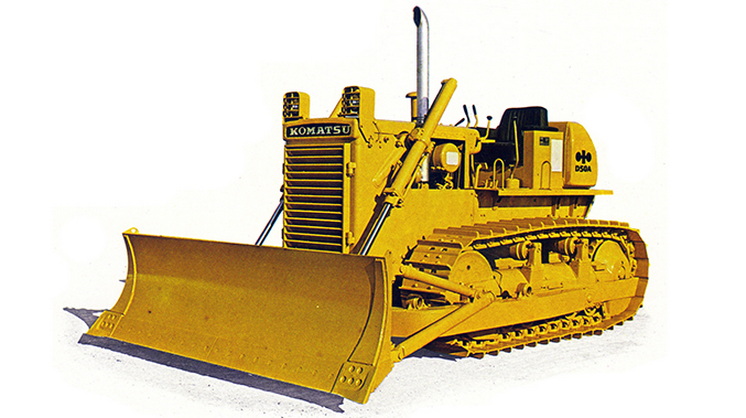KOMATSU WORLDWIDE CONSTRUCTION EQUIPMENT MANUFACTURER CELEBRATES 100 YEARS – Historical Milestones

One of the world’s leading manufacturers of construction and mining machinery, the Japanese brand Komatsu, celebrates its 100th anniversary this year. Komatsu equipment is also commonly used on Czech construction sites, in quarries and sandpits.
It is imported to the Czech Republic by KUHN-BOHEMIA a.s. In 2019, KOMATSU was ranked second in the world ranking of construction machinery manufacturers with total sales of 23.3 billion US dollars.
Establishment of the company
The origins of the brand are linked to the name of the visionary Japanese industrialist Meitaro Takeuchi, founder of Takeuchi Mining Co (TMC), an iron ore mining and processing company. Komatsu Iron Works was then a service organization, a subsidiary of TMS, responsible for manufacturing components and equipment for Takeuchi Iron Works. Its speciality was mainly heavy hydraulic presses.
As the company’s production activities grew, it was spun off as a separate company, Komatsu Ltd., by decision of the board of directors on May 13, 1921, and was authorized to sell its products on the open market outside the parent company, TMC.
The first tracked tractor
Another historic milestone came in 1931 when Komatsu built the first-ever tracked agricultural tractor in Japan. There was another significant moment in the 1930s that is related to the future birth of the Japanese leader in construction machinery. That moment was the start of the production of high-quality castings and special steel with high durability. Production was preceded by many years of research and testing of these materials.
The legendary D50 bulldozer
In the period just after World War II, there was a surplus of American equipment in Japan, which briefly curtailed domestic production. The revival of domestic production came in 1947 when Komatsu developed the first real tracked tractor for the industry at the initiative of the government. It was a legendary bulldozer model with the type designation D50.

Soon after, Komatsu began mass production of its diesel engines. During the post-war reconstruction of the country in the 1950s, the D50 bulldozer was in demand. Bulldozer production continued to improve throughout the 1960s and machines with over 300 horsepower began to roll off the Komast production lines.
As part of the expansion, the headquarters were relocated to Tokyo; a modern factory was built in Osaka, and other companies were acquired and subsidiary plants were established (Kawasaki, Himi).
Source: Lomy a těžba
